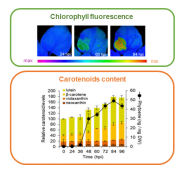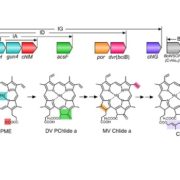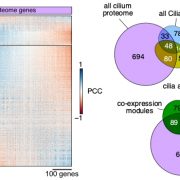Whole plant chamber to examine sensitivity of cereal gas exchange to changes in evaporative demand (Plant Methods)
Stomata represent the entry point into the leaf for CO2 that will be fixed by rubisco in photosynthesis and the exit point of water as it is lost to the atmosphere. As such, they are subject to tight regulation in response to the environment so that water loss is minimised and a supply of CO2 is maintained to the site of fixation – the balance between these two flows determines the intrinsic water use efficiency (iWUE). Different plant species show varying responses to changes in the vapour pressure deficit (VPD, the discrepancy between the saturated and actual vapour pressures), but analysis of photosynthetic traits and WUE has been largely limited to leaf-level measurements which may not represent the whole plant. In this manuscript, Jauregui et al describe the design, construction, testing, and use of a whole plant gas exchange system. This system avoids the pitfalls of previous chambers through hardware upgrades that enable tighter control and monitoring of the environment inside the chamber, while allowing the simultaneous measurement of plant iWUE and photosynthetic parameters. The system was used to demonstrate that while transpiration was restricted at high VPD, photosynthesis was not limited in wild-type cereal genotypes. (Summary by Mike Page) Plant Methods 10.1186/s13007-018-0357-9









